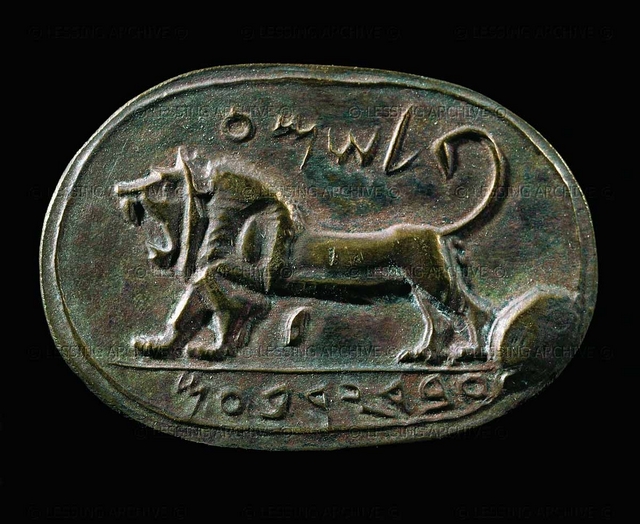Date- c. 788 BCE
Current Location- Unknown
Language and Script- Hebrew; alphabetic
General Information-
Jeroboam II inaugurated the longest reign of a king of Northern Israel in 788 BCE. He ruled over a period of unparalleled prosperity, taking advantage of a lapse in strong Assyrian control of the Levant. Jeroboam’s name is preserved on a seal made of jasper that is dated paleographically to the mid-eighth century, ruling out Jeroboam I, a tenth-century king of Israel. The seal depicts a magnificent lion, realistically shown in full-throated roar with its tufted tail erect. Several other seals from the late Iron Age bear the title ‘bd hmlk, “servant of the king,” an indication that the ‘ebed was a high-ranking official of the kings of Israel and Judah. Biblical evidence lends further credence to this hypothesis. For example, one of the royal officials listed in 2 Kings 22-12 is “the king’s servant (‘ebed hammelek) Asaiah” (see also 1 Kings 1-47; 2 Kings 5-6, 25-8).
Circumstances of Discovery and Acquisition- This seal, made of jasper, was found in the Megiddo excavations of 1904; it was discovered accidentally in the excavation dump, not in a stratified level. Although the seal itself was lost en route to the Istanbul Museum, an impression cast in bronze had been made prior to its shipment.
